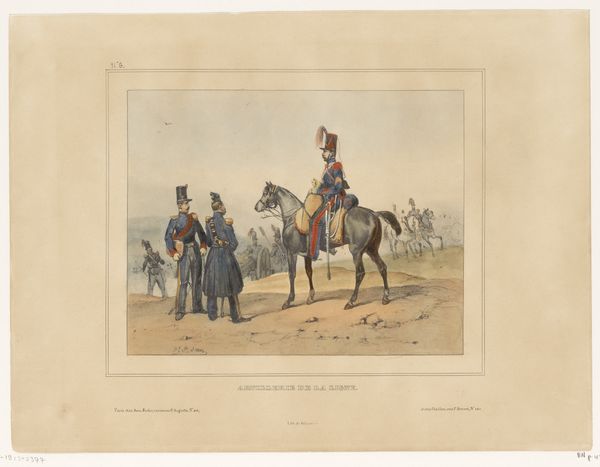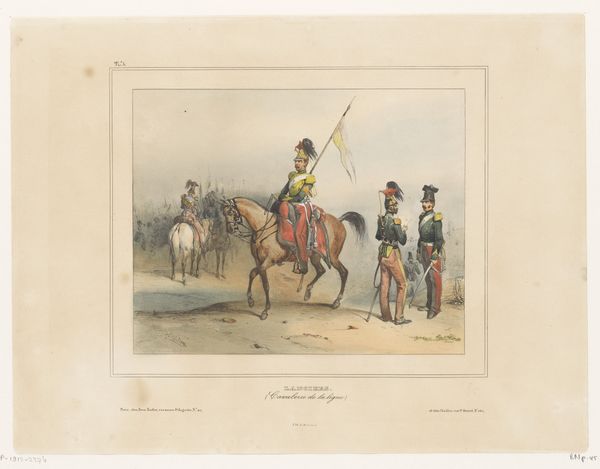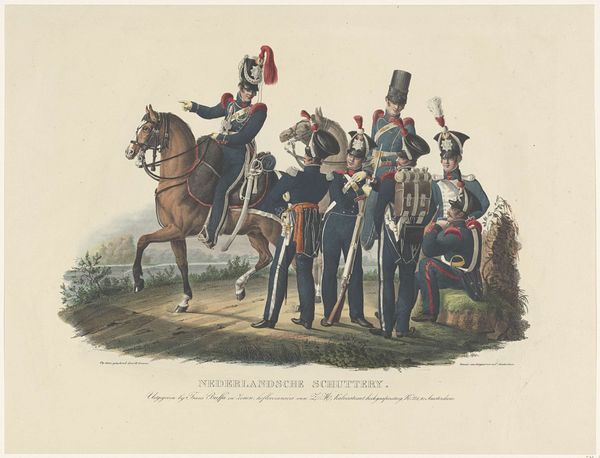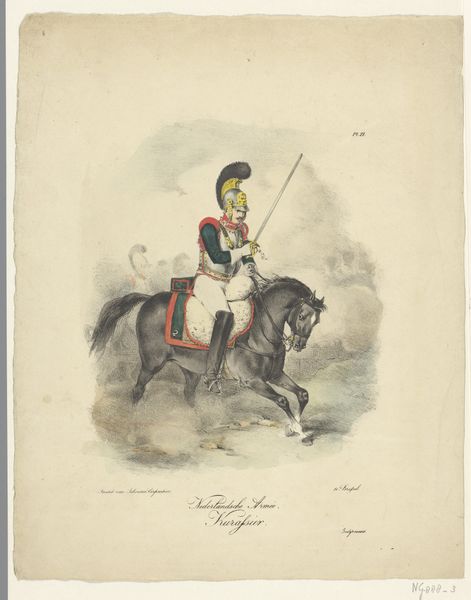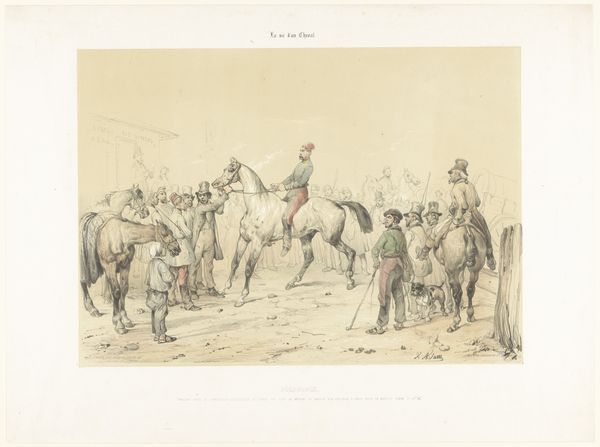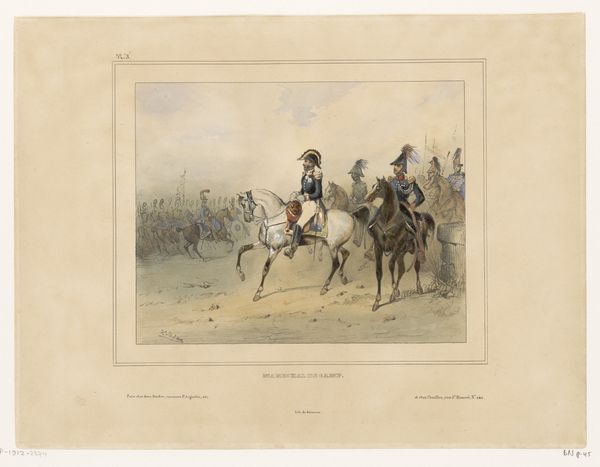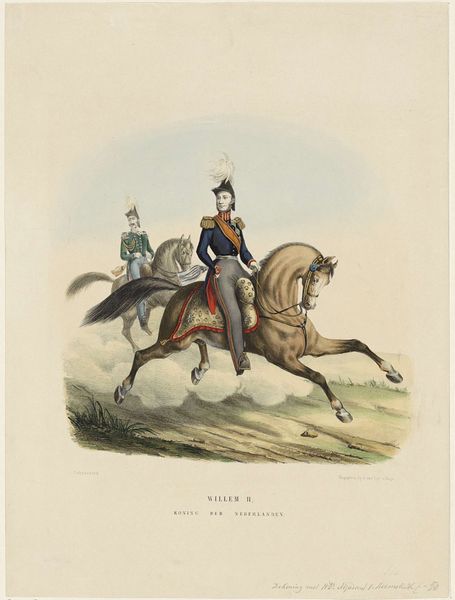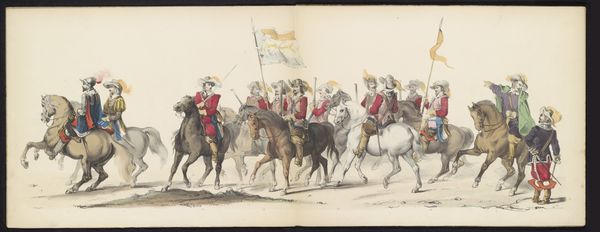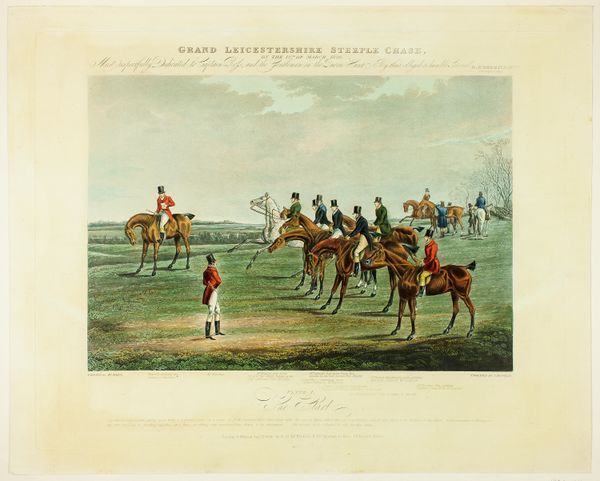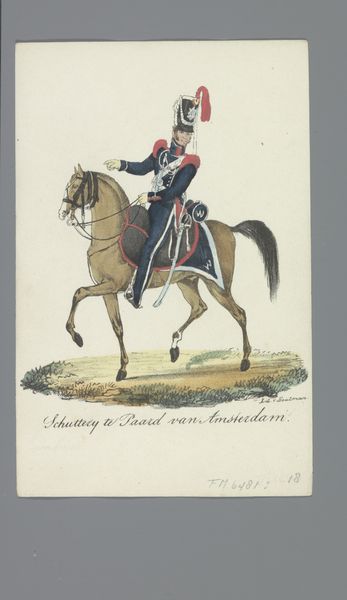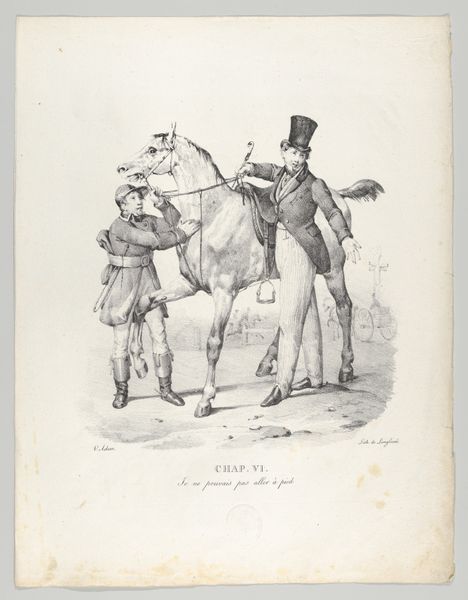
drawing, watercolor
#
portrait
#
drawing
#
water colours
#
watercolor
#
watercolour illustration
#
history-painting
#
botanical art
#
mixed media
#
watercolor
Dimensions: height 635 mm, width 467 mm
Copyright: Rijks Museum: Open Domain
Curator: Willem Steelink's "13 Februarij 1814-1884. Kommandanten van het Regiment," a watercolour from 1884, depicts a regimental cohort. What leaps out at you initially? Editor: It feels so light, almost like a ghost parade! All these riders, yet the delicate washes of watercolor keep it ethereal, like a memory. It's not the imposing, heavy feel I usually expect from military art. Curator: The artist’s selection of watercolour serves to create subtle tonal variations and intricate detailing, highlighting the precise uniforms and accoutrements. The figures, distributed as they are across the page, draw the eye around. Editor: It's almost diagrammatic, isn't it? The text at the top combined with the clustered figures suggests documentation more than celebration, like a beautifully rendered regimental record. Makes you wonder what each man’s story was. Did they know they'd be captured in watercolour, frozen in formation like this? Curator: We could certainly infer this was conceived, in part, as a historical record. But also, note how the placement on the page provides visual breathing space for each rider. The colour palettes, while muted, are subtly distinct. Notice how the composition utilizes a structured hierarchy; this isn’t merely about documentation; it also seeks an aesthetic and harmonious outcome. Editor: Harmonic dissonance, maybe? Something about the flat, almost childlike rendering clashes a little with the formality of the subject matter. It’s an intriguing contrast; naive and dignified at the same time. It’s charmingly stiff. I keep imagining their horses wanting to bolt for a field of wildflowers. Curator: Well, charm aside, it offers a perspective into the formal representation of military command in the late 19th century. The chosen artistic style offers something of its cultural milieu; both its focus on precision and its capacity for gentle elegance are contained herein. Editor: Precisely. I see now what’s compelling here; there’s almost an apologetic quality to its pomp. These weren't painted to inspire awe. Rather to document them simply as men in a moment—even now I imagine Steelink wanting us to reflect on their human ordinariness. Curator: A resonant insight. Its effectiveness is undeniable. Editor: Absolutely, yes. The piece really stays with you, it truly makes you stop and imagine each story within it.
Comments
No comments
Be the first to comment and join the conversation on the ultimate creative platform.
